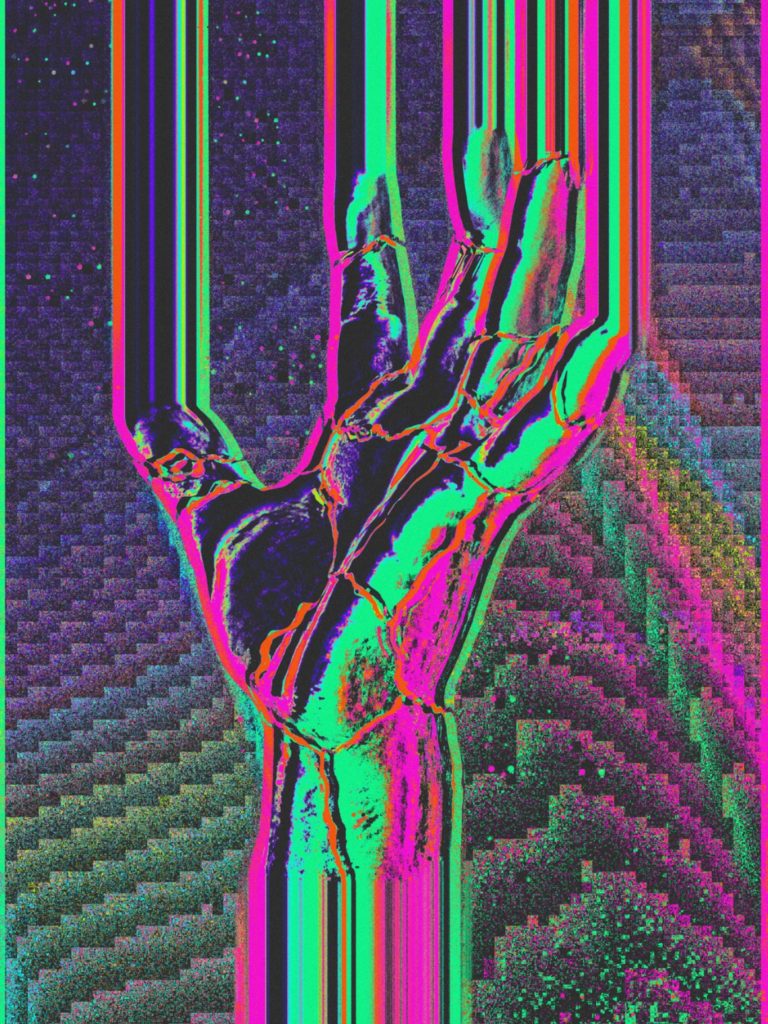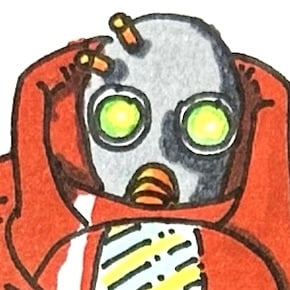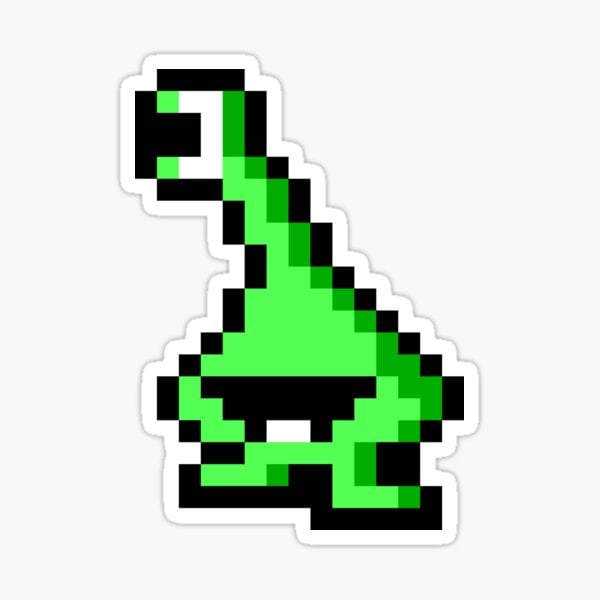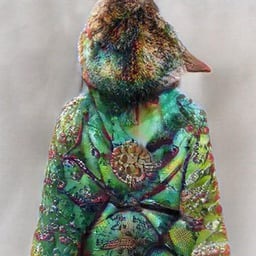I’m wondering if it’s pseudo religious with humans being created in God’s image (Ancient Aliens stuff), the human-centric idea that intelligent life must resemble us, it being easy to make costumes for movies and TV when all you need to do is paint someone’s skin, or if SciFi writers were going for the uncanny valley effect for example.
Budgetary restrictions.
One of my favorite trivia bits from Deep Space Nine;
In order to have a bustling station with weird, exotic, new aliens, the production team took to mixing up alien makeup appliances. A Cardasian neck ridge, with a Klingon forehead, maybe a fish-species mouth, paint it all a different color and baby, you got an alien stew goin’.
In written media, including scripts, it is just easier for readers to understand sci fi aliens as ‘human but different’ which is along the same lines as why robots are mostly bipedal human shaped. It also allows for stories about humans, since that is the basis for a lot of sci fi stories as well.
So time and effort restrictions too!
One of the many things I liked about Hail Mary Project was that the aliens are extremely non-humanoid, but you still develop empathy for them. It’s my favorite Andy Weir book by far.
Big same.
I REALLY like Andy Weir’s work, but was super surprised when he delivered a not-at-all humanoid alien in a compelling way. The Alien’ crazy math skills felt really Deus Ex Machina, but was still compelling.
I wish Weir would write something like The Expanse, with a major human civilization spanning the solar system, maybe something even bigger. He’s good at making normal problems in fantastic situations feel real and grounded and I’d love to see that style continued into bigger stories like that.
Definitely a factor. But also technology. We’ve only been able to make convincing CGI of alien creatures for the past 20 years or so. Before that it was always a person in a suit or with some plastic stuff stuck on their faces.
On top of that, most movies and TV shows are made to appeal to as wide an audience as possible. That’s why the characters have to be relatable. Therefore every creature somehow has a humanoid face with humanoid facial expressions.
Everything we imagine looks like humans. God looks like a human in nearly all portrayals - our consciences look like humans. Even death is an ᴀɴᴛʜʀᴏᴘᴏᴍᴏʀᴘʜɪᴄ ᴘᴇʀꜱᴏɴɪꜰɪᴄᴀᴛɪᴏɴ.
Aliens are just a projection of our fear of the unknown.
Even death is an ᴀɴᴛʜʀᴏᴘᴏᴍᴏʀᴘʜɪᴄ ᴘᴇʀꜱᴏɴɪꜰɪᴄᴀᴛɪᴏɴ.
GNU STP
It’s funny how some religions try to turn it around.
“No, God made US look like HIM!”
Blows the minds from centuries ago every time
May I suggest Solaris by Stanislaw Lem? The alien is a sentient ocean that doesn’t understand the distinction between past, present, or future, or between dreaming and wakefulness. It causes some issues…
Also Project Hail Mary by Andy Weir: Great book about communicating with species that differs from humans in almost every possible way.
Yep, it’s a great book for sure.
1 - It has been difficult, time consuming, and expensive to depict aliens as other than people in costumes. Aliens in scifi novels of the even of the past were often much more non-human appearing than the on screen counterparts.
2 - Many stories featuring aliens have elements of morality plays or other abstractions of human interactions which are ported to a scifi setting for the purposes of abstracting them.
3 - Some stories with humanoid aliens are wholly unconcerned in exploring the aliens as something truly alien, so aliens are simply different people more or less.
Sex. When the story tellers became horny, the aliens became fucky.
It’s interesting to look at what is actually required to be a technological species (assuming they develop it themselves).
- Dextrus Manipulators.
To make technology, you need something to manipulate the world reliably. Hands are the most obvious method, but not the only ones. Octopus tenticles could also likely fill the roll.
- Social groups and communication.
Developments are useless, if they can’t be passed on to the next generation, or shared around. Technology requires building on the work of others.
- Brain development.
There needs to be something to drive early brain development. With humans, it was likely sexual preferences. It could otherwise become a chicken and the egg type problem.
- Generalist.
A specialist species will tend to lean into their strengths. There’s far less need for intelligence when you have big claws, or heavy armour already. This also applies to size. Too big, or too small tends to specialise in a why the precludes other developments.
There are several species on earth that hit some of these points, but not all. E.g. Dolphins hit all but the manipulator issue. Octopus are completely solitary. Many mammals hit all but brain development, and crabs overspecialise.
I could easily see a small tweak leading to a radically non human technological intelligence. That is also based only on what has already developed and stabilised in the earth’s biome. The cambrian explosion showed that far more body forms are at least viable.
If you’re asking why it appears in our sci-fi, you were correct in assuming it was mostly about cheap costuming and special effects. If you’re asking for a general canonical reason for it, there isn’t one, but many sci-fi shows have come up with unique ones (for example, Star Trek had the Progenitors, a species of humanoids that seeded world with their DNA). If you’re looking for a possible real-world explanation that could account for it, Convergent Evolution might explain why intelligent species wind up being bipedal tetrapods.
Convergent Evolution might explain why intelligent species wind up being bipedal tetrapods.
I think there’s a compelling argument here. Certainly not all aliens would be bipedal tetrapods, but the ones who go on to be tool-using, space-faring species probably would be.
Yeah, that’s my thinking as well, although to be clear, I’m not saying that intelligent life would be humanoid, just that it’s the most reasonable real-world explanation I can come up with for why fictional aliens look human. I’m not an exobiologist, and I have no idea what the leading theories are on what intelligent life might look like. I’m just saying that, whenever I’m watching some sci-fi with a bunch of human-looking aliens, my go-to head cannon to explain it away is Convergent Evolution, and it at least feels like a reasonable explanation.
In my opinion, it’s always been about determinism and convergent evolution. Determinism states that if the cards were reshuffled and evolution were to take place again from the beginning, more or less the same would happen. There wouldn’t be sentient octopuses or hive mind ants controlling the planet, because there are simple evolutionary pressures giving rise to features that eventually lead to more or less bipedal apes.
This hooks into convergent evolution. This is about the fact that features like wings and eyes were so successful in terms of evolution they actually evolved independently of each other multiple times. Eyes evolved in different lineages and evolutionary pathways around 65 times during the history of earth. This indicates that simple evolutionary pressures (like needing to look around) will always end up with something that is a lens based retinal pigmented organ. This deterministic view of evolution leads many to believe that on another planet that looks like earth, inhabitants will look like us due to the rules and constraints of evolution.
This is my understanding, and rightly or wrongly it’s the theory underlying the artistic license supporting popular fiction like the star trek and star wars universes.
Obviously my views are supported by confirmation bias, but in the only ecosystem we know of the hominid body plan is the most successful.
Things would be different in different environments, like higher gravity or ocean planets, but in the absence of any data about those the safe bet is that most intelligent life looks similar to us.
Several people have mentioned budgetary restrictions, which is a huge part, but there are practical considerations, regardless of budget. Even with a big budget, it’s only recently that they’ve been able to make convincing non-humanoid aliens that interact with other actors (mostly through CGI). Earlier, there were good examples of movie monsters or aliens that were done with stop motion or puppets, but not in a way that they shared the screen with the human actors in a meaningful way. Can you imagine if, say, the Vulcans on the original Trek series were wildly non-human - how silly it would have looked? The technology just wasn’t there to pull it off.
Also, most aliens, even in books, are some variation of earth life. They’re reptile-people, big spiders, intelligent bugs, or whatever. I think that’s mostly because it’s pretty hard to envision something truly novel/new. So lots of books, movies, and shows come up with some rationale for why everything in the galaxy looks like some kind of earth life to excuse that.
Like others have said, budgetary restrictions and limited imagination is the honest answer, but there are a couple somewhat interesting “handwavey” explanations a sci-fi universe can use. Off the top of my head:
-
Directed Panspermia: Life on Earth (and other planets) was seeded by an intelligent higher order. Evolution occurred mostly naturally, but all following the same starting blueprints with variations to account for environmental differences. Eventually this leads to intelligent, humanoid life. Basically, sci-fi intelligent design theory.
-
Convergent Evolution: Two unrelated organisms can evolve similar traits because they happen to be best suited to certain tasks. For example, the number of times crabs have evolved independently, because crab-like traits work universally well for their shared niche. So in theory, if humans are distinctly advantaged for our evolutionary niche, it stands to reason that other forms of intelligent life might resemble humanoids as well.
-
Lack of creativity from the first people claiming to have seen one. The rest just piled on.
I don’t think it’s a lack of creativity - our brains try to turn all sorts into faces and monsters and whatever else as it’s evolutionary beneficial to turn that shadow into a lion because there’s a small chance it could be, or that rock into a face because it could be a friend or foe, even down to looking at a mouse gripping something while eating and thinking “it’s like us”… When you consider that, of course aliens are going to look somewhat familiar as we’ve learnt to identify human traits better than nonhuman traits
Considering that no one has ever factually seen an alien, we’re left with nothing but our ability to imagine them. And in times past, we didn’t have big budget imaginations like we have now. So like all things from the past, even our fantasies were basic in comparison.
Ever wonder why no one claims to have seen little grey men anymore? Or for that matter- when was the last claim of alien abduction?
It’s because it’s all bullshit.
Exactly. The thought that extra terrestrial life we’d come in contact with would be in the form of one life from piloting a spacecraft is, in and of itself, such a human concept.
Let alone a humanoid life form.
I think it’s just a hell of a lot easier, and cheaper, and probably more pleasant for the viewers too.
For TV, cost has something to do with it. Though beyond that, as far as storytelling goes, it’s easier to imagine first contact with a species that looks like roughly human-sized bipedal cat-lizards or something than, say, a swarm of telepathic jellyfish, some kind of fungal rhizome or Douglas Adams’ sentient shade of blue.
Maybe https://en.wikipedia.org/wiki/A_True_Story from the 2nd century - although even that is a parody of existing stories. So the origin dates back a long time!
One headcanon explanation I have for this is:
Not all, but some sci fi universes make a central component of their setting the existence of a myriad of alien species (Star Trek, Star Wars, any setting with interacting with countless other species.) When we see species that humans are regularly interacting with, we are only seeing a small subset of the species that exist in that setting. It’s just an unfortunate fact of biology that species find it easier to interact with beings that are most like themselves. The Federation mostly consists of humanoid aliens. We do occasionally see really exotic life forms find their way into Star Fleet, but they’re the exception, not the rule. In my canon, they try to make contact, diplomacy, and exchange with every species they can. But they are inevitably more successful with humanoid aliens than non-humanoid ones. It’s just a lot easier to make meaningful communication with beings more similar to yourself.












